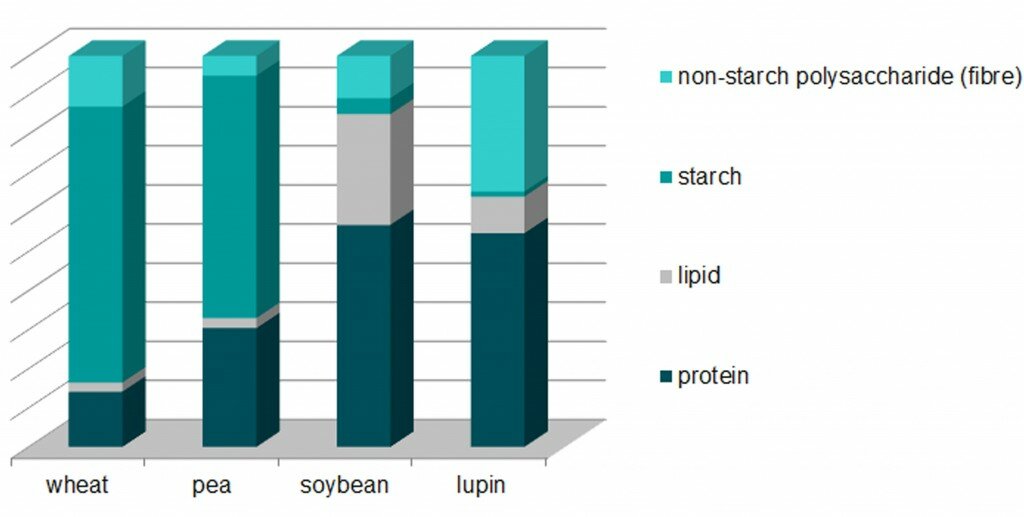Grain
Composition
The lupin is devoid of starch, which is very unusual for a species of edible bean.
Lupins have a thick seed coat (25%) which consists mainly of cellulose (insoluble fibre-bran) and its removal is the first step in lupin processing.
The kernel (split) of lupin is rich in protein (40%), dietary fibre (37%) and moderate in fat (7%) made up largely of unsaturated fatty acids.
Intensive plant breeding programs have ensured that modern lupin varieties have relatively low levels of the alkaloids found in their ancestral genotypes.
Lupins also contain moderate amounts of carotenoids; beta carotene, lutein, zeaxanthin and tocopherols (Vitamin E)
Australian Sweet Lupin features a higher calcium and phosphate content than cereals with trace element content varying in line with the mineral content of the soil in which the lupin is grown.
Lupin oils have high antioxidant capacities due in part to the presence of tocopherol (Vitamin E – the total vitamin E content is about 2.3-4.6 mg/kg of oil).



 © 2013 Lupin Foods Australia | Website by Zap IT |
© 2013 Lupin Foods Australia | Website by Zap IT | 


